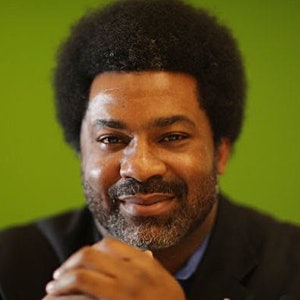At a young age, Sharif El-Mekki was intrigued about activism.
Hearing about his interest, a teacher approached him and said there was “no purer form of activism than teaching Black children well.”
“That resonated me and really guided me into looking at education and educational justice being intertwined with racial justice,” said El-Mekki, founder and CEO of the Center for Black Educator Development. “I realized that’s what I could pursue.”
 Sharif El-Mekki
Sharif El-MekkiWhen Black students have at least one Black teacher during grades 3-5, dropout rates decrease by about 30%. The rate lowered to 39% for Black students in underserved neighborhoods, according to National Education Association President Becky Pringle.
Exposure to Black male educators also benefits white students as it provides a more “diverse cultural lens for learning,” she added.
To discuss recommendations on ways to increase representation within the teaching workforce, the Educational Testing Service (ETS) hosted the second part of its series, “Structures for Success: Supporting, Developing and Retaining Black Male Educators” on Wednesday evening.
“While we know the urgency of recruiting, developing and retaining more Black male educators to teach in our classrooms, that urgency is now magnified by the educational equity crisis brought on by the pandemic,” said Doris Smith-Ribner, Pennsylvania Commonwealth Court Judge Emeritus.
Around 25 years ago, students of color represented four in 10 of the public-school population. Now, the number has increased to one out of every two students. However, despite this, the population of male educators has remained at 2% for almost a decade, Pringle reported.
Low representation can be correlated to a lack of respect, limited career growth opportunities and low salary rates, she added.
Additionally, often times, Black males are used as disciplinaries, she noted.
“Instead of being seen as content experts and as the professionals they are, who have gone through rigorous preparation just like their colleagues, they are pigeon-holed into operating in that school system in a disciplinary capacity,” said Pringle.
Addressing the issue goes beyond recruitment.
Focusing on retention is key as losing a teacher creates additional expenses within the school’s budget.
To make changes within the workforce, the National Education Association, for example, directed $4 million of a $12 million investment to create mentorship and emotional support opportunities as part of an effort to reduce the feeling of isolation faced by teachers of color.
Providing structural support such as coaching and mentorship for all teachers, leads to an increase of 22% and cost reduction of nearly one million in recruitment and early-stage development, according to Dr. Desmond Blackburn, CEO of New Teacher Center.
 Dr. Richard Warren Jr.
Dr. Richard Warren Jr.“That cost savings then can be applied to teacher retention and other support issues,” he said. “Black males are most likely to upon entering the profession be thrusted into the most challenging conditions and situations with the most responsibilities, least paid and having to chair the Black history month celebration. We need to support Black males.”
Dr. Richard Warren Jr., director of the Men of Color in Education program at the University of Md. Eastern Shore, emphasized that retention and success on any level is “proceeded by supports on all levels.”
State board policies should also be reevaluated in order to ensure funding is readily available to support Black teachers. Warren also suggested turning to unions to see how resources are used.
“I think the combination of those and others are responsible for making sure that we are intentional about retaining the students that we do have,” he said.
With support and training often seen as an afterthought, El-Mekki suggested “insight interviews” rather than exit interviews to better understand the individual experiences of Black male teachers.
“If it is a negative learning environment for Black children, it is a negative working environment for Black teachers,” he said. “Quite often, we want to separate the two. But it is the same thread of microaggressions, same lack of support.”
Beyond recruitment and retention, post-secondary institutions—such as minority-serving institutions—can also encourage more Black males to enter the field by working with students to pass the PRAXIS test to meet certification requirements.
“When it comes to education, representation isn’t just a nice objective,” said Dr. Lillian Lowery, vice president of student and teacher assessments at ETS. “It is a difference maker. Our institutions need to reorganize around the principle that it is our responsibility to recruit, retain and then prepare a diverse workforce. Our failure to do so says much more about our educational institutions than our diverse educators.”
Sarah Wood can be reached at [email protected].


















